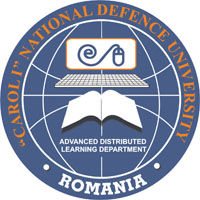POSSIBILITIES TO USE THE COMPUTERIZED ASSESSMENTS FOR IDENTIFYING THE EFFORT CAPACITY AND MANAGING THE FUNCTIONAL EXERTION IN MOTOR ACTIVITIES
POSSIBILITIES TO USE THE COMPUTERIZED ASSESSMENTS FOR IDENTIFYING THE EFFORT CAPACITY AND MANAGING THE FUNCTIONAL EXERTION IN MOTOR ACTIVITIES
Author(s): Constanta Urzeala, Silvia Teodorescu, Valeriu TomescuSubject(s): Education
Published by: Carol I National Defence University Publishing House
Keywords: VO2max; motor activities; cardiorespiratory fitness; computerized assessment
Summary/Abstract: The purpose of this study is to highlight the importance of the computerized assessment of the effort capacity in persons who practice leisure motor activities. This is an appropriate determination of the ventilatory thresholds, VO2max, corresponding to their functional capacity and level of fitness adaptation. In this sense, the Quark CPET software (Cardiopulmonary Exercise Testing) can be used for those engaged in activities of the sports for all type, such as: jogging, swimming, triathlon, long distance skiing, mountain climbing, cycling, etc., in which aerobic and anaerobic thresholds represents an important component. An assessment possibility ensured by the Quark CPET is the Bruce Stress Test protocol, which is used with various ergometers (treadmill, bike, rowing, etc.), as an effort test meant to investigate the cardiorespiratory capacity. The benefit of this assessment tool is that it determines the ventilatory thresholds. The data measured by the Quark CPET is measuring the VO2max, the aerobic and anaerobic thresholds, the heart rate values and many other markers. We consider that using the Quark CPET software to identify and measure the cardiorespiratory fitness in persons practicing leisure motor activities allows: identifying the efficiency of different instruction methods through which the aerobic and anaerobic capacity is developed; monitoring the energetic costs of diverse motor activities; determining the biomechanical efficiency in the execution of motor skills such as walking and running; monitoring the energetic cost in the case of some routine activities. We underline the increased spreading of computerized devices for monitoring the body’s response to effort in the practice of leisure motor activities among the followers of this type of exercise, as an evidence of their interest in the efficiency of the chosen activities and of their attempts to surpass their own body’s limits related to the demanding effort.
Journal: Conference proceedings of »eLearning and Software for Education« (eLSE)
- Issue Year: 11/2015
- Issue No: 03
- Page Range: 353-358
- Page Count: 6

